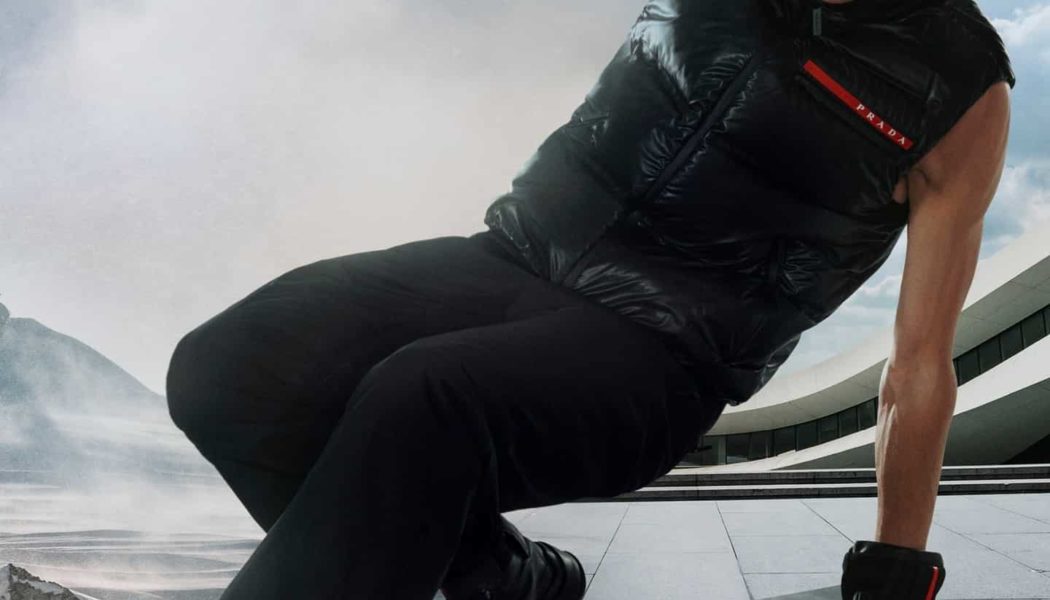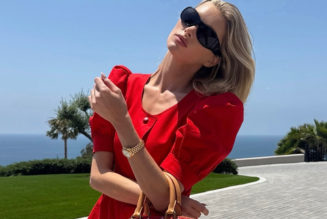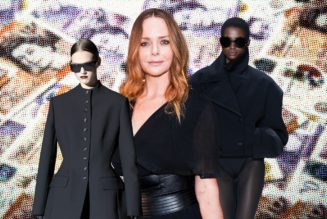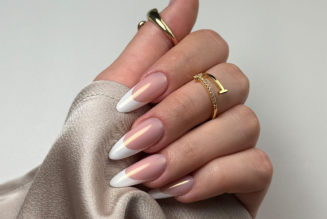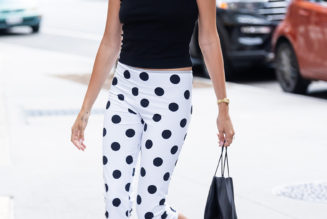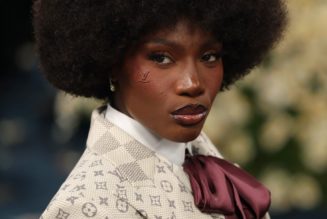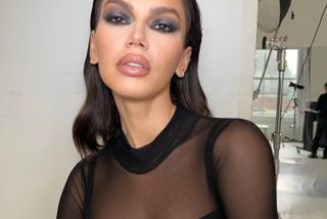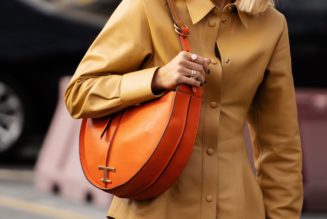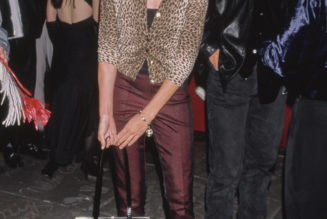Champagne flutes. Supermodels. Bright lights. Fashion. The world of top designer brands conjures up a swirling chaos of exclusivity, luxury, and style. But where does one turn in the midst of the maelstrom of top designer brands? Each brand competes to prove to you in subtle ways that it’s the best and that it deserves your money the most. Thankfully, we can’t take our fingers off the pulse at Fashion Beans, so we’re here to guide you.
But why bother with top designer brands? Is it all just fluffed-up BS? Or are there legitimate benefits that befit the high price tag?
Firstly, originality. Top designer brands are attempting to create something never seen before, even just subtle tweaks to what the fashion house is famous for. Secondly, during fashion week, certain themes and clusters form to represent trends. This is an indication of where our high street style is heading; buying from top designer brands puts you ahead.
Thirdly, you are paying for high-quality clothing. A luxury brand’s reputation is on the line, so they only source the best fabrics, often employ highly skilled workers, and therefore make products with real longevity. Lastly is the clout. A designer logo represents prestige, a high-quality product, and hints at a certain lifestyle or social status. There’s no denying this.
Now, how do top designer brands compete within this market? Each brand has its own approach, which is what makes following it interesting. They might focus on artisanal hand-made leather goods, be big on TikTok, double down on its heritage, venture (bravely) into the Metaverse, champion sustainability, rely on the designers’ creativity, or employ global influencers and ingenious billboard marketing strategies.
The way brands achieve status is constantly changing and is somewhat dictated by the society it is trying to impress. With this top designer brands list, we’ll give you a sense of what the fashion world looks like and which designer names fare better in which department.
Key Takeaways
When shopping around for your favorite top designer brands, there are a few things to bear in mind. Does the brand use high-quality fabrics? Employ innovative or labor-intense manufacturing techniques? Is it doggedly committed to creativity? What does the marketing suggest? Are the clothes suited to your style? Most important: it is totally okay to think designer names are overrated, over-hyped, and not for you.
Luca Faloni first and foremost is a designer name that focuses on the quality and longevity of a garment. This brand is unlike many of the high-fashion runway brands you may be thinking of but is no less deserving of a space on this list with designer names.
What Luca Faloni brings to the table is a divine focus on Italian tradition and materials (there’s no cashmere polyblend here). The big focus here is slow fashion, while other brands, which I undoubtedly love the same, will pump out six seasons of clothing, Luca Faloni strolls along providing you with those quality staples only those who really appreciate craftsmanship will know and love. While this brand may not be the bread and butter of NYFW, it’s one that deserves a place in your closet.
An evolving brand is one you want to get behind, and sometimes there’s nothing cooler than knowing you’re looking to the future. With one foot firmly planted in the present here and now, and the other in the future
Founded in 2014, this is one of the babies on this list of best designer brands, but the brand speaks for itself. Specializing in footwear, over the past two years I’ve been pleasantly surprised with the additional wears they’ve dropped, including menswear staples and accessories. Watch out because you’re absolutely going to see more of
Gucci was founded in 1921 in Florence by Guccio
House of
Gucci is now the number one of all men’s top designer brands for online sales, and the word itself is a term rappers use to describe something successful. Talk about the zeitgeist…
Of all the men’s top designer brands, some say there is only one fashion show worth watching each season. Prada. In 1978 with only a PhD in Political Science from the University of Milan, Miuccia Prada took over her family’s luggage business, turning to fashion shortly after in 1985.
Miuccia has built the brand into a billion-dollar empire of influence, pared-back style, and clothes of the highest quality. In terms of contemporary reputation, this is one of those designer names that’s almost untouchable. And with the incredible designer Raf Simons on menswear, Prada shows no signs of changing course.
Christian Dior became famous through his “New Look” collection. It featured the “little black dress,” a symbol of Parisian style and a vehicle by which women could reclaim expression in the post-WW-II era. These traits have stayed close to the brand since. Menswear direction by Kim Jones has tilted towards streetwear since 2018. His clothes are stylish, luxurious, and with a modern bent. Dior recently designed a racing kit for the game Gran Turismo and has taken on M’Bappé as a global ambassador. This suggests a more youth-led, digital direction for Dior.
The man once desired to be an actor, but life had other plans. The Texan worked as the creative director for Yves Saint Laurent and
This designer brand was launched in 1910 by Coco Chanel, and the famous interlocking “CC” logo still dominates their pieces today. Initially, Coco made her name by breaking the mold of haute couture, her dresses tapping into the post-war “Flapper” style, using frills and masculine colors. The perfume No. 5 was released in 1921 and is still an iconic fragrance even today.
To give a better understanding of the aesthetic philosophy, Chanel once told Harper’s Bazaar, “simplicity is the keynote of all true elegance.” Post-WW-II, Chanel was endorsed by the Hollywood set, including Marilyn Monroe. In recent years Chanel has entered the male beauty space, bringing the first line of well-marketed and desirable men’s make-up and skincare.
Aged 17, Paul Smith was hospitalized after a crash destroyed all hopes of becoming a professional cyclist. In the hospital, he started talking to a local art student and decided to pursue a creative life. He is now a mainstay of the Paris Fashion Week but still keeps offices and studios in his hometown of Nottingham. Paul Smith is also one of the few remaining independent designer brand names on the circuit.
The brand is famed for its tailoring that embraces clean lines and quality fabric in a playful manner. His collections use slogans, figurines, and wild patterns married alongside more traditional designs. Paul Smith oozes taste and personality, making it one of the top designer brands for men. The man himself also scrubs up nicely.
Alexander McQueen was renowned for being a highly conceptual and theatrical designer. So, his beginnings in fashion are slightly unsuspected. He built his tailoring skills through Anderson & Shepard, Gieves & Hawkes, and Barmans & Nathans. He then assisted Romeo Giglio in Milan and got his MA from Central St Martin’s in 1992. Four years after graduating, he was named chief designer of Givenchy.
Collections under his own name had the unerring craftsmanship of a tailor, the flair of a costume designer, and a fearless conceptual vision. He was a genius. Hence why it was such a shock when McQueen took his own life in 2010. The brand continues to produce incredible, chic, and boundary-pushing clothing.
Established in 1908 by Hans Wilsdorf, Rolex was put on the map in 1926. The Oyster was the world’s first waterproof wristwatch. The brand has taken this spirit of innovation and expanded across the globe. The timepieces are a testament to resilience. They are adept in the extremes, producing watches for deep-sea divers, pilots, and racing drivers alike.
Since then, the brand’s innovation, style, and timelessness kept it at the very top of the horological food chain. The second-hand Rolex market doesn’t hurt either. A Rolex is guaranteed to immediately rise in value after purchase (if you can get your hands on one, that is). Limited supply combined with needing a dealer to buy one creates legitimate exclusivity. For these reasons, Rolex is one of the most sought-after luxury watch brands in the world.
In 1856, Thomas Burberry opened an outdoor-wear store in Basingstoke, outside London. Many tartan patterns populate the British Isles, but Burberry’s adopted check is now in the fashion history books. This is all thanks to Jacqueline Dillemman. Originally used on the inner lining of the raincoats from the 1920s onwards, in 1967, Dillemman removed the lining and covered luggage in it. Everyone loved what she’d done, and the Burberry check was born, dominating the brand’s aesthetic. For quintessentially British luxury fashion, Burberry is still top.
Valentino is the red heart of Italian designer brand names. Valentino Garavani took the traditional route through fashion design. He apprenticed at labels before launching his own line in 1962 in Florence. His first collection was a rapturous success and red became the color of Valentino. Look out for the enclosed “V” symbol found on jewelry, belts, and loafers. Not to mention the classic Valentino Art Deco patterns too. In recent years, the brand has become synonymous with luxury hoodies, tracksuits, and garish sneakers.
In typical 19th Century fashion, Louis-François Cartier assumed the jewelry workshop of his master. In 1847, he set up Maison Cartier in Paris. French royalty began to take notes and make orders. Plus, the ornate designs were vaunted by high society. Since then, the brand has expanded its prestigious Parisian reputation throughout the globe.
These days, the jewelry is decadent, laden with rare gemstones, and secured by fine metals. But it’s also tasteful and well-designed, like the three-band Cartier ring. Wristwatches are also an important aspect of the brand, which Cartier has been producing since 1904. The “Tank” is elegant, simple, and stylish, and the “Crash” (released in 1967) is a symbol of the brand’s creative daring. Cartier produces some of the finest jewelry in the world.
In the 1920s, the Italian shoe designer worked with celebrities and Hollywood stars. In 1927, he set up a brand under his own name and was responsible for the innovation of the wedge heel and cage heel. Ferragamo’s products are of supremely good quality. Unsurprisingly, the leather goods—bags, belts, and wallets—ooze finesse. The current creative director, Paul Andrew, is keeping the brand classic, elegant, and desirable. Basically, not streetwear.
Bottega Veneta was launched in 1966 in Milan. It was created in opposition to the entrenched fashion houses. Its tagline? “When your initials are enough.” Veneta is the rebellious yet still related cousin to the heritage fashion houses. Under British designer Daniel Lee since 2018, this disruptive nature continues.
Lee eschews social media and relies on the clothes themselves to create an air of mystique. In 2021, the brand itself also deleted its whole social media output. Lee employs the brand’s iconic intrecciato patterning (a square weave) with panache, threading it through fine fabrics and quilted puffers. Veneta creates a chic, innovative path for the native digital and non-digital alike. Veneta is easily one of the best designer brands for satisfying your rebellious side.
Pierre Balmain was the understudy of Hubert de Givenchy and Christian Dior. He then set up on his own and became famous in the 1950s for his Hollywood ballgowns. In 2011, 24-year-old Olivier Rousteing changed the game. He brought Balmain into the 21st Century by leaning into influencer culture. He built a “Balmain Army” including Kendall Jenner, Gigi Hadid, Kim K, plus AI models, Shudu, and Zhi. For the digitally connected, Rousteing’s Balmain is a cornerstone of the modern fashion landscape.
Giorgio Armani became renowned for his powerful tailoring in the eighties. Set up in 1975, Armani began designing flowing, yet elegant suits which became the envy of Wall Street. By the turn of the millennium, he was Italy’s most successful designer. Still to this day, the runway collections are brooding, dark, and inimitably Armani. Under the Armani monicker, there are a few brands. Armani Exchange is a streetwear, everyday/casual wear, EA7 is sportswear, and Emporio Armani is the chic, fashion-forward, but more affordable brother to the original Giorgio Armani. Armani still retains its status as a wonderful tailoring house.
P.S. Armani was the first designer to ban models with a BMI under 18.
It took Karl Lagerfeld just three seconds to design the now globally famous Fendi “FF” Zucca logo. This was an attempt to make the brand seem younger, which can be difficult for a brand that dates back to 1925. The brand’s modern reputation is dominated by Lagerfeld’s creative direction from 1965 until his death in 2019. He split his duties between Chanel, Fendi, and his own label. While Kim Jones has now taken over, the brand is widely known for its bold and dramatic use of furs and leather.
Hubert de Givenchy was one of the largest fashion designers. No, really, he measured up at 1.98m. But his large physical stature will always be eclipsed by his historic brand. The brand was established in 1952 and focused on perfume. However, it became renowned for its work with Audrey Hepburn, especially that black dress in Breakfast at Tiffany’s. In the modern age, Riccardo Tisci brought drama, elegance, and a moody black Parisian chic. Since 2020, the brand has appointed Matthew M. Williams of Haute streetwear brand 1017 ALYX 9SM as creative director.
Jeanne Lanvin set up her fashion house in the early 20th Century and made her daughter her muse. She was one of the first designer names to set up a children’s range. She was inspired by the painters and artists of the time and used colorful geometric patterns against black and white. She also coined a certain “Lanvin blue.” Lanvin is a staple of Paris fashion week.
D&G gets its name from its two founders, Domenico Dolce and Steffano Gabbana. Two names worthy of their own fashion brands, let alone combining to form one black and gold super-brand. The pair debuted in Milan in 1985 to rapturous acclaim. Since then, they have been famed for their excess, flamboyance, and boldness. They are not afraid to dabble with powerful black tailoring, “D&G” branding, gold, silvers, glitter, crystals, and diamonds.
There’s more to this brand than just cool boxer shorts. Calvin Klein apprenticed as a suit/coat designer in New York before setting up his own label in 1968. In 1978, thanks to some infamous saucy advertising, the CK jeans sold 200,000 pairs in the first week. The brand has gone on to utilize its sexy imagery to sell its clothing. But this has been done alongside producing fine American high-fashion designs. According to their website, the brand reached Global retail sales exceeding “$9 billion in 2017, distributed in over 110 countries.
Sander hails from Germany, first releasing a collection in 1975. It was her sophisticated, tailored workwear in desirable fabrics that piqued the fashion world initially. It was a minimalist style, done elegantly. In 1999, the Prada group bought 75% of the brand, allowing further global expansion of its iconic style.
The brand then went through a few owners, and Sander left, beginning a collaboration with Uniqlo called +J, which was extremely successful. In 2012, Sander returned to the brand replacing Raf Simons. Again, she left just three seasons later. Despite the brand suffering from a lack of consistency behind the scenes, it retains a place as somewhat of a master of minimalism.
In 1988, Martin Margiela set up his Maison in the image of non-conformity. The original style was raw, grungy, and visceral. Since John Galliano took over in 2014, the brand has pushed the boundaries of fashion. Their all-gender website section points to its history of gender fluidity and androgyny.
Look out for the chic labels too. They’re pinned by four stitches in each corner and have an ascending list of numbers, which are circled to signify the collection that item of clothing belongs to. The clothing at its heart is austere, billowy, and almost rag-tag in places; still retains a sense of unwavering verve.
Ralph Lifshitz’s sales job at Brooks Brothers inspired the creation of his own brand in 1967. But it wasn’t until 1970 that the famous Polo range dropped. That iconic logo has punctuated polo shirts, t-shirts, cable-knit sweaters, and gilets. While Ralph Lauren has become a bastion of Ivy-League style, the Purple Label is a runway-ready collection that uses fine fabrics and unique designs to lure in wealthier clientele. On the whole, though, the clothes are smart, reasonably priced, and of great quality. Ralph Lauren’s clothes are good investments.
Comme Des Garcons was set up by Rei Kawakubo. She uttered my favorite fashion quote: “I work in three shades of black.” These words unlock the aesthetic of Comme Des Garçons. For a long time, it seemed the point of the brand was to be as non-commercial as possible.
In the modern era, the focus has shifted. The brand launched an iconic “CDG Play” range featuring a smirking love heart. The collaboration with Converse, which began in 2009, is one of the Play’s most notable designs. CDG collaborated with
Moncler is named after a mountain village in France. This gives you a nice metaphor for how the brand blends the mountain with the street. Founded in 1952 by René Ramillon and Andrè Vincent, Moncler is a shortened version of Monestier-de-Clermont, near Grenoble. As the wealthy began holidaying in the mountains, the pair designed quilted items to cater to them. This included sleeping bags, jackets, and tents. If it’s hiking boots, beanie hats, or puffer jackets made by top designer brands, look no further than Moncler.
From casuals to tailoring, BOSS ticks all the boxes in a minimalist style. Call it German Engineering, or call it a sense of panache. Its history, however, isn’t so auspicious. Founded in 1924 in Metzingen, Germany, by Hugo Ferdinand Boss, he was responsible for producing SS uniforms in factories using forced labor during the Second World War. But these days, the company is associated in name only.
Boss has begun its flirtation with Gen-Z influencers with The Hugo House at Coachella in 2022 for influencers to TikTok their days away and promote the brand. But Hugo Boss is still renowned and committed to its chic tailoring. And unlike other top designer brands, their suits sit in the mid to affordable bracket.
In 1837, Louis Vuitton arrived in Paris at just 16 years old and began apprenticing as a trunk maker. After 17 years, he set up his own brand, and the company expanded through its reputation as a trunk maker. The famous “LV” monogram came about in 1896 as a response to the flood of fake Louis Vuitton trunks in the market.
In the 20th Century, the brand’s reputation extended into leather bags, hence the cultural cachet of a Louis Vuitton bag. In 1997, LV started producing clothing under the illustrious Marc Jacobs. Then, in 2011 Kim Jones entered and began introducing streetwear elements. This ultimately culminated in one of the most hyped collaborations ever: LV x Supreme in FW17. Not long after that, the designer and founder of cult streetwear brand Off-White, Virgil Abloh, was named head of menswear but sadly passed away in November 2021.
In the modern era, the brand has skirted the new and the exciting alongside its heritage status as a fine bag and trunk maker. Louis Vuitton is first on this top designer brands list, in part due to its role in the huge luxury conglomerate LVMH luxury (Louis Vuitton Moët & Hennessy), valued at $329bn. This made it the most valuable company in Europe in 2021.
The Algerian-born, Yves Saint Laurent, began his career in fashion at Christian Dior and founded his namesake brand with the help of Pierre Bergé in 1961. Yves Saint Laurent, the brand, was perennially ahead of the times. It embraced androgynous fashion when it wasn’t mainstream. It was also the first brand to put women of color on the runway.
Yves Saint Laurent is famous for designing the smoking jacket (or “Le Smoking”) for women in 1966. The brand’s aesthetic commitment to smoke, rock ‘n’ roll, and gender subversion has continued. In the years of Hedi Slimane, the brand carried a distinct, edgy, indie rock ‘n’ roll feel. Think leather jackets and skinny black jeans. These days, creative director Anthony Vaccarello has brought some of the old-school “YSL” Parisian suave back into the roster, combining it with the edgier modern SL to make it one of the top designer brands for men.
Hermès began life making artisanal leather harnesses for horses in 1837, making it one of the oldest fashion houses in the world. This commitment to artisanal produce and craftspeople has continued into the 21st Century. Manufacturing takes place across 52 specialized workshops in 11 different regions in France. In 1925, the brand launched its menswear range aimed at Golfers. It later went on to include jewelry, watches, and sandals.
The brand is legendary for its silk scarves which arrived in 1937, plus silk ties which landed in 1949, and continues to produce artisanal products of the highest quality. The Hermès approach is to invest, elevate and nurture the craft of the produce. That’s why it remains one of the most respected men’s top designer brands.
Gianni Versace launched his first collection in 1978. The Medusa figure became synonymous with his designs and also his use of innovative materials like aluminum mesh and new techniques that fused leather and rubber. His designs clothed Princess Diana, Elton John, and Madonna.
When Gianni was murdered in 1997 in Florida, it was up to Donatella Versace, Gianni’s younger sister, to take over. She took the brand in a much louder, celebrity-driven, oily, sexy, almost renaissance, which catapulted the brand’s trajectory north. She focused the direction on New York and Milan as the fashion capitals of the world. The Medusa still remained prominent, and so did the square-maze glyph. The brand skirts the liminal boundary of brash, garish, and luxuriously chic.
FAQ
-
-
The top 10 designer brands in the world are Louis Vuitton, Dior, Gucci, Prada, Rolex, Hermès, Tom Ford, Armani, Saint Laurent, and Burberry. Though to put this into any sort of objective measurement is impossible. So, we have amalgamated size, reputation, and heritage to come up with this list.
-
Jewelry brands and watch brands arguably are the most expensive. Just consider the rare metals, the incredible craft, and the use of rare gemstones. With that in mind, look to Cartier and Rolex. However, a Louis Vuitton x Supreme truck sold for $150,000 in 2017 and a Steiff Louis Vuitton teddy bear sold at auction in 2000 for $2.1m. This puts Louis Vuitton in good contention for the most expensive clothing designer.
-
Try Hugo Boss or Ralph Lauren for the most affordable designer pieces. This gray Boss suit is currently going for just under $700 on their website. Also, try Armani Exchange or EA7. These are subsidiary brands of the larger Armani brand but don’t expect the same quality, design, or feel of Giorgio Armani.
-
In the last decade, one designer would easily answer that question: Gucci. Alessandro Michele has created an absorbing universe of dandyism. However, other brands are worth noting. Bottega Veneta has a unique approach to design, and Louis Vuitton will always be in contention while Kim Jones is there too.
-
